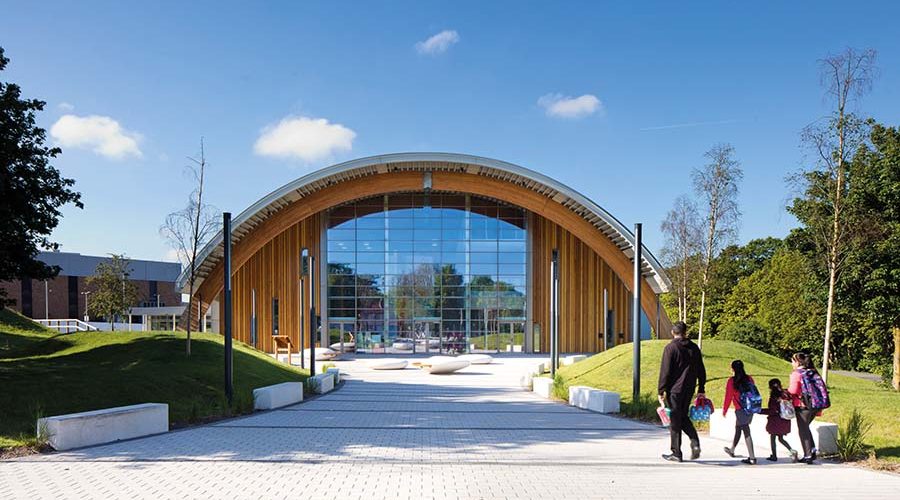Sport England estimates that inactivity causes one-in-six deaths and costs the NHS approximately £1bn per year. With UK sport and leisure facilities now reopening their doors, we need to consider who is using these facilities and what barriers they face.
GT3 Architects
GT3 Architects, a leading architecture firm specialising in sports and leisure, has undertaken a research piece as part of its Inclusive Design series to dig deeper into the issues people face when visiting leisure centres.
“As people architects, we believe that a fundamental part of our role is understanding, anticipating and designing for the needs of our users,” says Paul Reed, Associate Director and Head of Sports and Leisure at GT3.
“This means not only ensuring existing, active users are engaged, but also creating exciting, beautiful and well-balanced facilities to support under-represented groups and demographics who don’t currently feel catered for at sports and leisure facilities. At present, leisure centres only cater for 16% of the population, so these issues need to be addressed if we are to get more people active.
“Our Inclusive Design series forms part of a wider research and development push led by a team of architects, interior designers and engagement specialists. For our first project, we looked specifically at caregivers of young children – this was defined as any adult who had experience taking a young child to a leisure centre.
“We discovered that 85% of caregivers surveyed find it incredibly difficult to deal with the challenges of a leisure centre – such as where to put a child while you get changed or how to get into the pool safely if your child cannot stand by themselves – particularly when alone.
“59% of people surveyed said they are usually the only adult responsible for their child or children during a visit and the word ‘stressful’ was used frequently, with caregivers feeling that the experience is more difficult than they would like.
“Encouragingly, 58% of people surveyed would like to visit a leisure centre more often. We believe that if facilities were designed with caregivers in mind, they would use the facilities more, increasing both their own and their children’s exposure to water and/or fitness activities.”
According to the 2018/19 Active Lives Children and Young People Survey by Sport England, it was estimated that only 46% of the nation’s children are meeting the recommended level of activity. This has dropped even further with COVID-19 restrictions to just 19% of children being active for 60 mins per day.
Paul continued: “It is critical to identify the barriers faced by users and ensure that any design meets the physical, mental and social needs of caregivers.
“By including a few simple additions – such as safe parking and access to the facility, a waiting area in reception, clear wayfinding, buggy stores near the changing rooms and considered family changing rooms – it can have a massive impact on how caregivers use the space and ultimately create an improved experience.
“Design is more than just shaping the physical environment. It involves addressing standards, practices and behaviours as well as changing the way users are engaged. By considering space, layout, technology and visual aspects, we can create a more family-friendly and safer design that will ensure modern leisure centres are used and loved.
“As an industry, we need to fully understand how our designs can be used to provide more welcoming and inclusive facilities for all, improving both the physical and mental health of our communities in the process. As architects, we can play a part in encouraging activity, especially now that leisure centres are re-opening, and we need to see this opportunity as a much-needed contribution to public health.”
Judith Atkinson, Project Architect at GT3, led on the survey. She added: “This is the first report in our Inclusive Design series, so we really wanted to dig into the issues and barriers people face when attending a leisure centre. As a parent of a toddler myself, I felt it really important to highlight the difficulties caregivers often face when using facilities – it can be difficult taking a young child out of the home environment, particularly when facilities don’t meet your – or your child’s – basic needs.
“Even small things – such as making sure windows are in children’s sight line and they can hold a handrail when going into the water – make a big difference. I firmly believe that by understanding these caregivers’ experiences – such as knowing that 50% consider a waiting area within the reception important or that 96% would prefer a family-friendly cubicle – we can make leisure centres more inclusive.
“Our caregivers research was such a success; we’re currently doing a similar piece of research into autism and dementia. Our hope is that we will be able to provide proven design solutions for our clients, which, in turn, will ensure their end-users feel supported. The result will be a far more inclusive, welcoming space for the whole community, and will hopefully encourage far more people to use exercise to support a healthy lifestyle. A win-win for everyone.”











